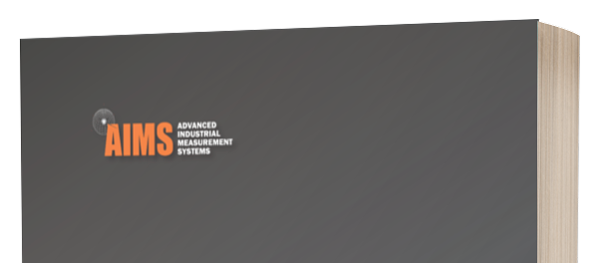
Q. IMTS visitors will be looking for new ideas about ways to solve their manufacturing problems as well as cut costs and increase output. How can coordinate measuring machines help?
A.Part dimensions, tolerances and the materials components are made from are becoming increasingly complex. Tolerances affect the successful performance of an end product but tighter tolerances can add cost and hinder throughput. The ability to accurately measure tolerances helps companies strike a balance that maintains strict quality requirements while helping to control operational costs and avoid implementation of unnecessary steps in their value stream. Three axis coordinate measuring machines have been used for the last 30 years. But most manufacturers today have adopted 5-axis machine tools to increase throughput. It doesn’t do any good to have 5- axis machine tools if you have a 3-axis CMM. That combination creates a bottleneck. We know that manufacturers need CMM technology that can keep pace with today’s machine tools, collect data at point of use and raise production levels. Anyone can inspect a part but we truly are the only company that has developed and can provide 5-axis CMM technology.
Q. Does 5-axis technology really make that much difference when compared with 3-axis CMMs?
A. Let’s look at the numbers. Typically manufacturers have to buy three 3-axis CMMs to get the throughput we can accomplish with just one 5-axis CMM. With our PH20 5-axis technology a company can go from 3 conventional CMMs to just one. In addition to increasing production, they also save operational costs and the cost of ownership associated with one machine versus three machines. Just the calibrations alone for three machines when compared to one machine will save a company approximately $10,000 a year. Parts are also readily available for our 5-axis CMMs.
Just on calibrations for three machines versus one you will save 10,000 a year. Manufacturers also don’t have to employ a service engineer because parts are readily available for our 5-axis machines.
Q. How do CMMs fit into today’s “smart factory” environment?
A. Let’s face it. Time is a precious commodity for customers these days. Automation and the need to do more with less are just a couple of strategies for coping with the smart factory environment. In an Industry 4.0 (IoT), Industrial Internet of Things (IIoT) landscape, the combination of AIMS’ HB equipped with Renishaw’s 5-axis PH20 can collect variable data from final product dimensions and send that data to an in-house ERP/SPC system. The measurement data can be evaluated for trends and assignable variations and issue alerts to supervisors and engineering personnel when necessary. Using CMMs to collect real time data is a key element when it comes to reducing waste, downtime and cycle times. The CMM can also be connected to other CNC machines to collect data such as machine status, preventive maintenance and process capability. The speed and efficiency of the PH20 paired with our mobile shop floor HB reduces complex part inspection time from days to minutes when compared to conventional surface profiling methods like a sine bar and optical comparator. The lab-grade LM, fitted with a 5-axis REVO 2 and driven by nine linear motors, can provide precise positioning and three times more throughput with little to no maintenance.
Q. What do you feel manufacturers look for most from a CMM OEM?
A. Companies are looking for someone that can respond quickly with solutions that work. So many OEMS are about sales first. We believe that if we provide real world solutions to our customers─whether it’s simply advice or the design/build of a custom 5-axis CMM─when it comes time to make a purchase decision they will think of us. Customers are continually tightening tolerances on components. That means you have to have a CMM system that can keep up. We believe we offer the best customer service and support in the industry. Here’s why. We use Renishaw open architecture software which means we are putting the choice of service provider into the hands of our customers. If we don’t give them good service, they can go somewhere else. That keeps us focused.
Q. Why do you feel service and support is so important today?
A. The bottom line is that companies simply don’t have the resources available to service and support equipment. They are relying on OEMS to help them keep their machines in top performance condition. We have the engineering know-how to keep machines in spec but we also offer software support through our application engineers. We don’t enforce any software maintenance agreements and we don’t suspend support because a customer’s software isn’t up-to-date. Our first question when a customer calls is not ‘is your software up-to-date? It’s ‘how can we help you?’ Help might come in the form of bringing a customer’s part into the shop and running it on our machine to make sure accuracy and repeatability are where they need to be. We can design and build a fixture for a part or we can work with the customer to help them design and build it. We can also write a new program for that part and then work with the customer on appropriate inspection techniques either at our facility, on-site or through phone support.
AIMS Metrology (Advance Industrial Measurement Systems Inc.) will feature and demonstrate its LM Series 5-axis CMM and its’ HB Series 5-axis CMM at IMTS 2018. AIMS’ HB Series 5-axis mobile shop floor CMM can be seen at AIMS’ booth #135836. AIMS’ LM Series 5-axis lab-grade machine can be seen at Renishaw’s booth #135509.

